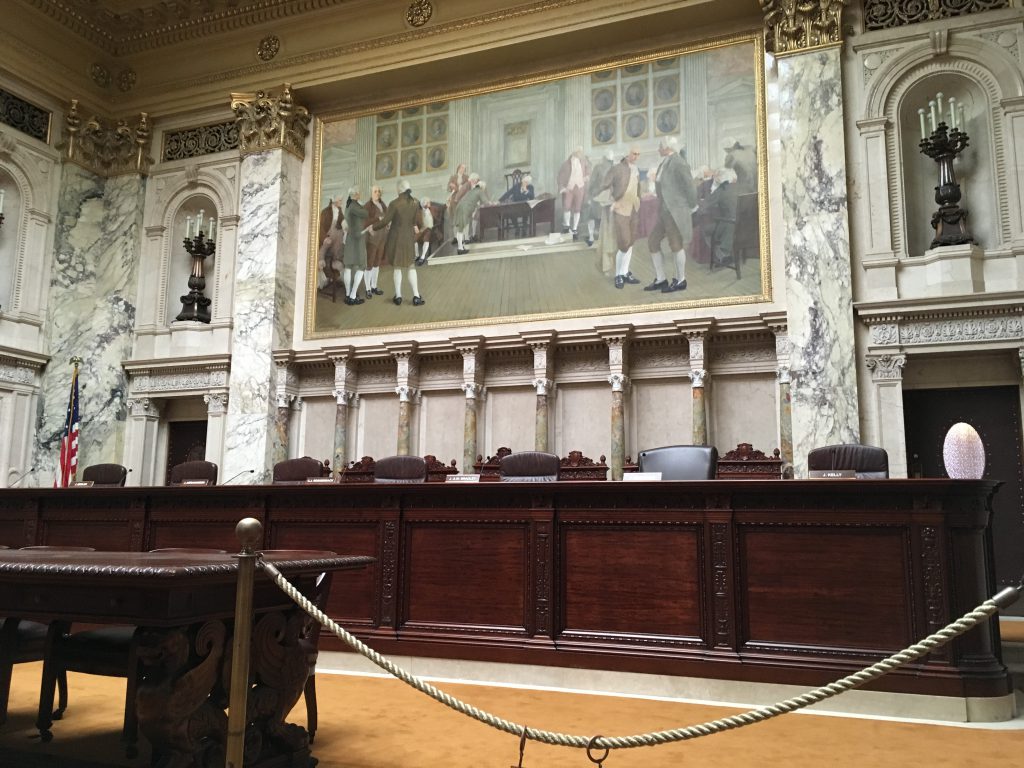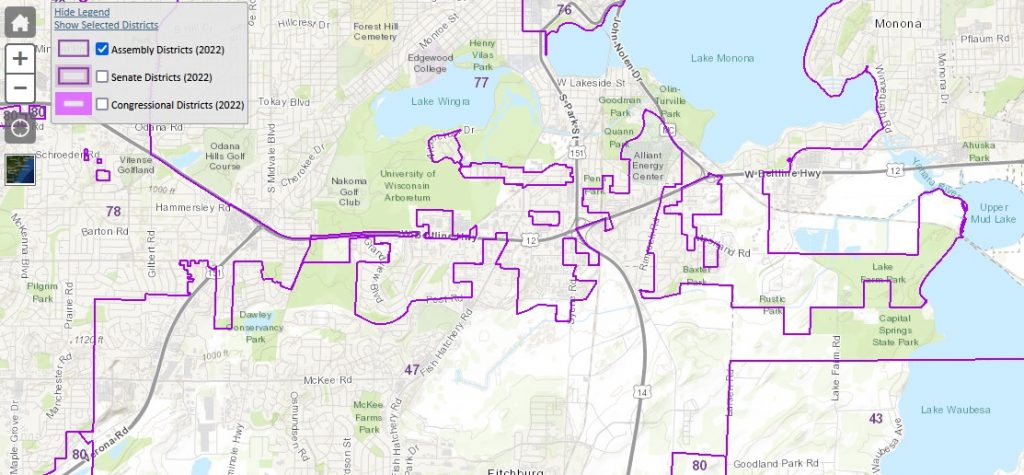How Will Supreme Court Rule On Gerrymandering Lawsuit?
And what exactly does contiguity mean when it comes to legislative maps?
On Nov. 21, the Wisconsin Supreme Court heard oral testimony on Wisconsin’s gerrymandered state senate and assembly districts. Lawyers opposing the maps and those supporting them were each given 80 minutes to make their cases.
As described in a previous Urban Milwaukee article, a group of Wisconsin voters asked the Court to rule against the legislative redistricting maps based on five points. The first three points were that the plans violate the Wisconsin Constitution’s guarantee of equal protection under law, that the plans retaliate against voters based on their viewpoint, and that the plans fail to adhere to the state Constitution’s guarantee of “justice, moderation, temperance, frugality, and virtue.”
However, it preserved the petitioners’ points four and five: whether the plans violate the Constitution’s requirement that legislators be elected from districts consisting of “contiguous territory” and whether they violate the separation-of-powers principle by adopting the plan that was vetoed by the Governor.
It added two additional issues: if the court rules that the existing maps violate the Wisconsin Constitution and the legislature and the governor then fail to adopt state legislative maps that comply with the Wisconsin Constitution, what is the proper remedy and what additional fact finding would that remedy require?
The contiguity argument stems from the Wisconsin Constitution’s requirements that assembly and senate districts be “contiguous,” commonly meaning that all parts of a district touch other parts of the same district. Yet, according to testimony at the hearing, over half the districts have “islands” that are surrounded by another district.
Apparently, these islands stem from the ability of cities and villages to incorporate non-contiguous sections of towns combined with the practice of including those isolated sections in the city or villages’ district. An example of this section of the map of Assembly District 47 in Dane County. Most of that district is south of the Beltline, but isolated portions of 47 are wholly surrounded by District 77.
At the court hearing, the two defenders of the current maps—Rick Esenberg of the Wisconsin Institute for Law & Liberty and Taylor Meehan of the Consovoy McCarthy law firm—argued that contiguity should mean “municipal contiguity” meaning that the islands are close enough and part of the same municipality.
I think that the critics of noncontiguous districts had much the better of the discussion and I would be surprised if the Court did not rule that the islands needed to be eliminated. Assuming the court reaches that decision, the question remains as to what should be the remedy. Should the existing maps be adjusted only to eliminate the islands, thus maintaining the gerrymander, or should new maps be developed?
There is no question that the maps developed following the 2010 U.S. Census constituted an extreme gerrymander aimed at perpetuating Republican control of the legislature regardless of election results. In a single-minded effort to maximize the Republican advantage, they sacrificed other values of good redistricting, such as compact districts and minimizing the splitting of governmental units.
The previous Supreme Court’s decision following the 2020 census to choose maps that made the “least change” guaranteed that the partisan gerrymander would continue. I find it hard to believe that this was not the true reason behind the then court majority’s decision to judge proposed maps by a least change rule. As a Harvard Law Review article observed:
The justices thereby created a new form of entrenchment: a doctrinal skew that tilts the legal playing field against arguments for unwinding a gerrymander and toward arguments for perpetuating it. That choice, in turn, entrenches Wisconsin’s biased maps more deeply than ever.
In rejecting the petitioners’ first three issues, the present court made it clear that their reason for doing so was based on the need to avoid fact-finding, not on the validity of the issues. If the court were to limit the remedy to eliminating the islands, it is likely that critics of the gerrymander would renew their attack, but in a district court which is charged with fact-finding. Whatever the district court’s decision, it is likely to be appealed to the Court of Appeals and eventually wind its way to the Supreme Court.
Starting from scratch to develop a better district plan would better serve democracy and reduce the continued load on the courts.
If you think stories like this are important, become a member of Urban Milwaukee and help support real, independent journalism. Plus you get some cool added benefits.
Data Wonk
-
Life Expectancy in Wisconsin vs. Other States
 Dec 10th, 2025 by Bruce Thompson
Dec 10th, 2025 by Bruce Thompson
-
How Republicans Opened the Door To Redistricting
 Nov 26th, 2025 by Bruce Thompson
Nov 26th, 2025 by Bruce Thompson
-
The Connection Between Life Expectancy, Poverty and Partisanship
 Nov 21st, 2025 by Bruce Thompson
Nov 21st, 2025 by Bruce Thompson
























It is difficult for me to stay calm as I think of the obvious injustice of the Republican gerrymandered districts 15 years ago. They knowingly and intentionally abused their power by creating districts like mine where I live in Greenfield to the point that my vote in Wisconsin simply does not count. Period. I have no say in government now. Democracy is in profound trouble when that happens. Fair voting is supposed to be the bedrock of American justice. It has become instead, the laughing stock of many around the country and world. Right this intentional wrong for the sake of democracy. Bill Klatte
Contiguous
Yet, according to testimony at the hearing, over half the districts have “islands” that are surrounded by another district.
How is it possible that this (no words to describe) insanity was ever been allowed by any court BUT Then again ……. Why has that map not been put up on bill boards for public display and media attention??
Where at the Dems Where is the press??